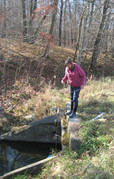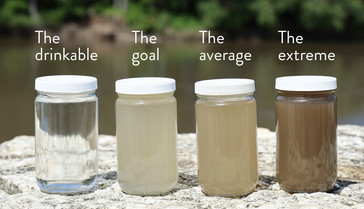|
September 2019
The Basin Alliance for the Lower Mississippi in Minnesota (BALMM) will meet Wednesday, Sept. 18, from 9 a.m. to noon at the Minnesota Pollution Control Agency, 18 Wood Lake Drive S.E., in Rochester.
Agenda as follows:
- 9:00 a.m.: “The Root River Field to Stream Partnership (RRFSP)”– Kevin Kuehner, Minnesota Department of Agriculture
- 10:15 a.m.: Break
- 10:30 a.m.: “Lessons Learned from RRFSP” – Ron Meiners, RRFSP
- 11:15 a.m.: Updates on Nitrogen Work Group- Caitlin Brady, Olmsted SWCD
- 11:45 a.m.: Regional Updates
- Noon: Adjourn

The Root River Field to Stream Partnership is a comprehensive, multi-scale effort to evaluate relationships between agricultural practices and water quality in glacial till and karst landscapes.
At the Sept. 18 BALMM meeting, Kevin Kuehner of the Minnesota Dept. of Agriculture (MDA) will share results from the first nine years of the study and will focus on the range and timing of surface runoff at the field scale.
During the second half of the talk, Ron Meiners, also with the MDA, will share lessons learned and experiences working with farmers and contractors to accelerate the adoption of targeted practices using field walkovers.
|
State and local agencies convened in July to discuss various projects studying impacts of nitrogen on water quality. At the Sept. 18 BALMM meeting, Caitlin Brady of the Olmsted Soil and Water Conservation District will provide a summary of the discussion and questions on the group’s future direction.

While cities and producers across the Minnesota River Basin have made changes to help water quality, the state’s namesake river and its tributaries continue to face several pollution challenges. The Minnesota Pollution Control Agency (MPCA) and local partners have drafted several studies that identify the pollutant sources, reduction goals, and strategies to get there:
- Minnesota River and Greater Blue Earth River Total Maximum Daily Load (TMDL) for Total Suspended Solids
- Minnesota River-Mankato watershed TMDL and Watershed Restoration and Protection Strategies (WRAPS)
- Watonwan River watershed TMDL and WRAPS
- Lower Minnesota River watershed TMDL and WRAPS
Altogether, the studies look at dozens of river segments impaired by bacteria, sediment, nutrients and/or chloride as well as 50 lakes with nutrient levels high enough to cause algae.
See the stories and web links below for more information.
The studies are open for comment through 4:30 p.m. Sept. 20. The agency is especially interested in comments that focus on policies and practices to expand or implement to reach water quality goals. After the comment period closes, the MPCA will revise the reports according to comments received and then submit them to the U.S. Environmental Protection Agency for final approval.
For details, please visit:
|
In addition to the Minnesota River studies on formal public notice, the MPCA has posted the Draft: Lake Pepin Watershed Phosphorus TMDL Report on its website for informal review and comment. Interested parties may submit comments through Sept. 20. They may also request a meeting by phone or in person to learn more about the draft TMDL. Send comments, or meeting requests, to Justin Watkins, MPCA watershed supervisor, at justin.watkins@state.mn.us or 507-206-2621.
The formal public notice will follow later this year.
|